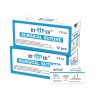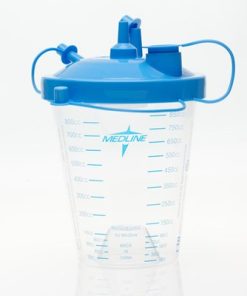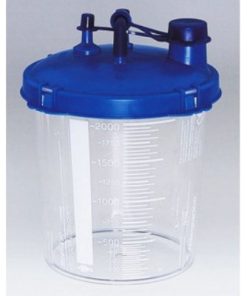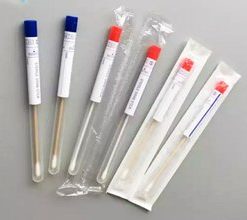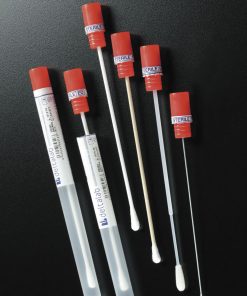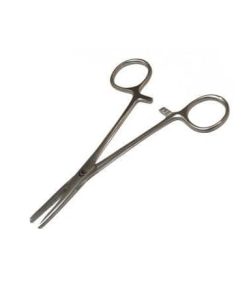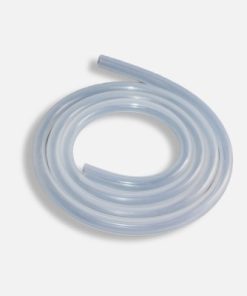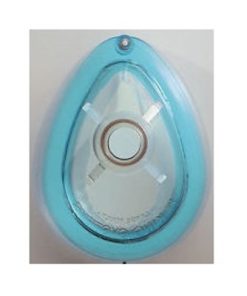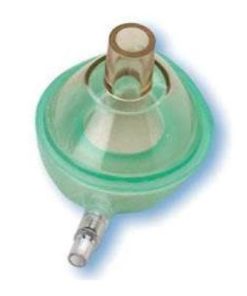ethilon suture
R434.65 Ex VAT
| Product Description | Size/USP | Thread length/cm | Needle specification |
| Chromic catgut | 3/0 | 75 | 1/2●20mm |
. Absorbable Sutures
These sutures are designed to dissolve over time and are used when long-term strength is not needed.
- Types:
- Catgut (Plain and Chromic): Absorbs in about 7-10 days (plain) and up to 3 weeks (chromic). Used for internal tissues, such as ligaments and fascia.
- Polyglycolic Acid (PGA): Absorbs in 2-4 weeks. Often used in general soft tissue approximation.
- Polylactic Acid (PLA): Absorbs in 6 months. Commonly used for orthopedic and plastic surgeries.
- Polydioxanone (PDS): Absorbs in about 6 months. Used in soft tissue approximation, pediatric surgeries, and subcutaneous sutures.
- Polyglactin (Vicryl): Absorbs in 60-90 days. Frequently used in gastrointestinal and gynecological surgeries.
- Uses:
- Internal organ repair
- Muscle and fascia closure
- Subcutaneous tissue suturing
2. Non-Absorbable Sutures
These sutures do not dissolve and are often used when permanent tissue support is needed.
- Types:
- Silk: High strength and elasticity, often used in cardiovascular and gastrointestinal surgeries.
- Nylon (Ethilon): Strong but lacks elasticity, commonly used for skin closure and vessel repair.
- Polypropylene (Prolene): Highly resistant to infection, used in cardiovascular, plastic, and general surgeries.
- Polyester (Ethibond): Braided and used for tendon repairs, cardiovascular surgery, and orthopedics.
- Stainless Steel: Extremely strong, used in orthopedic surgery, sternal closure, and abdominal wall repairs.
- Uses:
- Skin closure in areas of high tension
- Tendon and ligament repair
- Cardiovascular and neurological surgeries
3. Monofilament Sutures
These sutures are made from a single strand, which reduces tissue drag and the risk of infection.
- Types:
- Nylon (Ethilon)
- Polypropylene (Prolene)
- Polydioxanone (PDS)
- Uses:
- Skin closure
- Vascular surgery
- Subcutaneous tissue suturing
4. Braided Sutures
Made from multiple fibers, braided sutures provide better knot security but may cause more tissue trauma due to friction.
- Types:
- Polyglactin (Vicryl)
- Polyester (Ethibond)
- Uses:
- Muscle and fascia closure
- Ligament repairs
- Areas requiring high tension strength
5. Barbed Sutures
These sutures have tiny barbs that lock into the tissue and eliminate the need for knots.
- Uses:
- Cosmetic surgeries
- Internal tissue repair where tension distribution is needed
6. Natural Sutures
Derived from biological materials, these sutures are biodegradable but may provoke an immune response.
- Types:
- Silk
- Catgut
- Uses:
- Vascular ligations
- General soft tissue approximation
7. Synthetic Sutures
These sutures are manufactured from man-made materials, offering predictable absorption rates and minimal tissue reactions.
- Types:
- Nylon
- Polypropylene
- Polyglycolic Acid
- Uses:
- Skin closure
- Tendon repairs
- Subcutaneous suturing
8. Continuous vs. Interrupted Sutures
- Continuous Sutures: One long suture for the entire length of the wound. Used for long, straight incisions.
- Interrupted Sutures: Each stitch is tied off individually. Common for areas requiring precise tension distribution, like the skin.
9. Specialty Sutures
- Orthopedic Sutures: For tendon or bone repairs (Stainless Steel, Polyester).
- Cosmetic Sutures: Fine sutures like nylon or polypropylene, designed to minimize scarring.
- Vascular Sutures: Prolene is often used for vessel anastomosis in cardiovascular surgeries.
These sutures are selected based on the tissue type, required healing time, and the surgeon’s preference for optimal wound closure.
Welcome to MedQ, your go-to destination for superior hospital gloves and essential medical supplies. We specialize in providing a comprehensive selection of hospital gloves designed to meet the unique demands of healthcare professionals and institutions. Our steadfast commitment to excellence and safety ensures that our gloves consistently deliver the highest quality, with a primary focus on safeguarding both medical personnel and patients.
Related products
Catheters
Catheters
Catheters
Catheters
Catheters
Catheters




